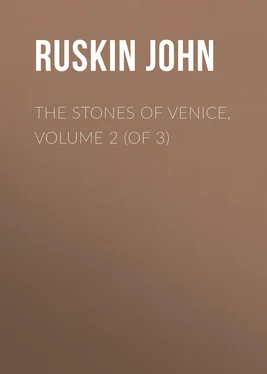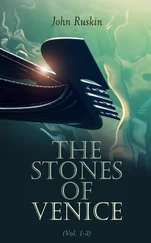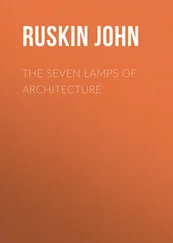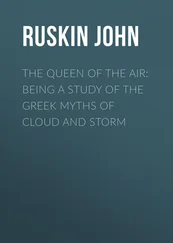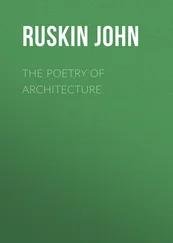John Ruskin - The Stones of Venice, Volume 2 (of 3)
Здесь есть возможность читать онлайн «John Ruskin - The Stones of Venice, Volume 2 (of 3)» — ознакомительный отрывок электронной книги совершенно бесплатно, а после прочтения отрывка купить полную версию. В некоторых случаях можно слушать аудио, скачать через торрент в формате fb2 и присутствует краткое содержание. Жанр: foreign_antique, foreign_home, architecture_book, literature_19, visual_arts, на английском языке. Описание произведения, (предисловие) а так же отзывы посетителей доступны на портале библиотеки ЛибКат.
- Название:The Stones of Venice, Volume 2 (of 3)
- Автор:
- Жанр:
- Год:неизвестен
- ISBN:нет данных
- Рейтинг книги:5 / 5. Голосов: 1
-
Избранное:Добавить в избранное
- Отзывы:
-
Ваша оценка:
- 100
- 1
- 2
- 3
- 4
- 5
The Stones of Venice, Volume 2 (of 3): краткое содержание, описание и аннотация
Предлагаем к чтению аннотацию, описание, краткое содержание или предисловие (зависит от того, что написал сам автор книги «The Stones of Venice, Volume 2 (of 3)»). Если вы не нашли необходимую информацию о книге — напишите в комментариях, мы постараемся отыскать её.
The Stones of Venice, Volume 2 (of 3) — читать онлайн ознакомительный отрывок
Ниже представлен текст книги, разбитый по страницам. Система сохранения места последней прочитанной страницы, позволяет с удобством читать онлайн бесплатно книгу «The Stones of Venice, Volume 2 (of 3)», без необходимости каждый раз заново искать на чём Вы остановились. Поставьте закладку, и сможете в любой момент перейти на страницу, на которой закончили чтение.
Интервал:
Закладка:
§ XXI. Indeed, these inferior means of exciting religious emotion were employed in the ancient Church as they are at this day, but not employed alone. Torchlight there was, as there is now; but the torchlight illumined Scripture histories on the walls, which every eye traced and every heart comprehended, but which, during my whole residence in Venice, I never saw one Venetian regard for an instant. I never heard from any one the most languid expression of interest in any feature of the church, or perceived the slightest evidence of their understanding the meaning of its architecture; and while, therefore, the English cathedral, though no longer dedicated to the kind of services for which it was intended by its builders, and much at variance in many of its characters with the temper of the people by whom it is now surrounded, retains yet so much of its religious influence that no prominent feature of its architecture can be said to exist altogether in vain, we have in St. Mark’s a building apparently still employed in the ceremonies for which it was designed, and yet of which the impressive attributes have altogether ceased to be comprehended by its votaries. The beauty which it possesses is unfelt, the language it uses is forgotten; and in the midst of the city to whose service it has so long been consecrated, and still filled by crowds of the descendants of those to whom it owes its magnificence, it stands, in reality, more desolate than the ruins through which the sheep-walk passes unbroken in our English valleys; and the writing on its marble walls is less regarded and less powerful for the teaching of men, than the letters which the shepherd follows with his finger, where the moss is lightest on the tombs in the desecrated cloister.
§ XXII. It must therefore be altogether without reference to its present usefulness, that we pursue our inquiry into the merits and meaning of the architecture of this marvellous building; and it can only be after we have terminated that inquiry, conducting it carefully on abstract grounds, that we can pronounce with any certainty how far the present neglect of St. Mark’s is significative of the decline of the Venetian character, or how far this church is to be considered as the relic of a barbarous age, incapable of attracting the admiration, or influencing the feelings of a civilized community.
The inquiry before us is twofold. Throughout the first volume, I carefully kept the study of expression distinct from that of abstract architectural perfection; telling the reader that in every building we should afterwards examine, he would have first to form a judgment of its construction and decorative merit, considering it merely as a work of art; and then to examine farther, in what degree it fulfilled its expressional purposes. Accordingly, we have first to judge of St. Mark’s merely as a piece of architecture, not as a church; secondly, to estimate its fitness for its special duty as a place of worship, and the relation in which it stands, as such, to those northern cathedrals that still retain so much of the power over the human heart, which the Byzantine domes appear to have lost for ever.
§ XXIII. In the two succeeding sections of this work, devoted respectively to the examination of the Gothic and Renaissance buildings in Venice, I have endeavored to analyze and state, as briefly as possible, the true nature of each school,—first in Spirit, then in Form. I wished to have given a similar analysis, in this section, of the nature of Byzantine architecture; but could not make my statements general, because I have never seen this kind of building on its native soil. Nevertheless, in the following sketch of the principles exemplified in St. Mark’s, I believe that most of the leading features and motives of the style will be found clearly enough distinguished to enable the reader to judge of it with tolerable fairness, as compared with the better known systems of European architecture in the middle ages.
§ XXIV. Now the first broad characteristic of the building, and the root nearly of every other important peculiarity in it, is its confessed incrustation . It is the purest example in Italy of the great school of architecture in which the ruling principle is the incrustation of brick with more precious materials; and it is necessary before we proceed to criticise any one of its arrangements, that the reader should carefully consider the principles which are likely to have influenced, or might legitimately influence, the architects of such a school, as distinguished from those whose designs are to be executed in massive materials.
It is true, that among different nations, and at different times, we may find examples of every sort and degree of incrustation, from the mere setting of the larger and more compact stones by preference at the outside of the wall, to the miserable construction of that modern brick cornice, with its coating of cement, which, but the other day, in London, killed its unhappy workmen in its fall. 30But just as it is perfectly possible to have a clear idea of the opposing characteristics of two different species of plants or animals, though between the two there are varieties which it is difficult to assign either to the one or the other, so the reader may fix decisively in his mind the legitimate characteristics of the incrusted and the massive styles, though between the two there are varieties which confessedly unite the attributes of both. For instance, in many Roman remains, built of blocks of tufa and incrusted with marble, we have a style, which, though truly solid, possesses some of the attributes of incrustation; and in the Cathedral of Florence, built of brick and coated with marble, the marble facing is so firmly and exquisitely set, that the building, though in reality incrusted, assumes the attributes of solidity. But these intermediate examples need not in the least confuse our generally distinct ideas of the two families of buildings: the one in which the substance is alike throughout, and the forms and conditions of the ornament assume or prove that it is so, as in the best Greek buildings, and for the most part in our early Norman and Gothic; and the other, in which the substance is of two kinds, one internal, the other external, and the system of decoration is founded on this duplicity, as pre-eminently in St. Mark’s.
§ XXV. I have used the word duplicity in no depreciatory sense. In chapter ii. of the “Seven Lamps,” § 18, I especially guarded this incrusted school from the imputation of insincerity, and I must do so now at greater length. It appears insincere at first to a Northern builder, because, accustomed to build with solid blocks of freestone, he is in the habit of supposing the external superficies of a piece of masonry to be some criterion of its thickness. But, as soon as he gets acquainted with the incrusted style, he will find that the Southern builders had no intention to deceive him. He will see that every slab of facial marble is fastened to the next by a confessed rivet , and that the joints of the armor are so visibly and openly accommodated to the contours of the substance within, that he has no more right to complain of treachery than a savage would have, who, for the first time in his life seeing a man in armor, had supposed him to be made of solid steel. Acquaint him with the customs of chivalry, and with the uses of the coat of mail, and he ceases to accuse of dishonesty either the panoply or the knight.
These laws and customs of the St. Mark’s architectural chivalry it must be our business to develope.
§ XXVI. First, consider the natural circumstances which give rise to such a style. Suppose a nation of builders, placed far from any quarries of available stone, and having precarious access to the mainland where they exist; compelled therefore either to build entirely with brick, or to import whatever stone they use from great distances, in ships of small tonnage, and for the most part dependent for speed on the oar rather than the sail. The labor and cost of carriage are just as great, whether they import common or precious stone, and therefore the natural tendency would always be to make each shipload as valuable as possible. But in proportion to the preciousness of the stone, is the limitation of its possible supply; limitation not determined merely by cost, but by the physical conditions of the material, for of many marbles, pieces above a certain size are not to be had for money. There would also be a tendency in such circumstances to import as much stone as possible ready sculptured, in order to save weight; and therefore, if the traffic of their merchants led them to places where there were ruins of ancient edifices, to ship the available fragments of them home. Out of this supply of marble, partly composed of pieces of so precious a quality that only a few tons of them could be on any terms obtained, and partly of shafts, capitals, and other portions of foreign buildings, the island architect has to fashion, as best he may, the anatomy of his edifice. It is at his choice either to lodge his few blocks of precious marble here and there among his masses of brick, and to cut out of the sculptured fragments such new forms as may be necessary for the observance of fixed proportions in the new building; or else to cut the colored stones into thin pieces, of extent sufficient to face the whole surface of the walls, and to adopt a method of construction irregular enough to admit the insertion of fragmentary sculptures; rather with a view of displaying their intrinsic beauty, than of setting them to any regular service in the support of the building.
Читать дальшеИнтервал:
Закладка:
Похожие книги на «The Stones of Venice, Volume 2 (of 3)»
Представляем Вашему вниманию похожие книги на «The Stones of Venice, Volume 2 (of 3)» списком для выбора. Мы отобрали схожую по названию и смыслу литературу в надежде предоставить читателям больше вариантов отыскать новые, интересные, ещё непрочитанные произведения.
Обсуждение, отзывы о книге «The Stones of Venice, Volume 2 (of 3)» и просто собственные мнения читателей. Оставьте ваши комментарии, напишите, что Вы думаете о произведении, его смысле или главных героях. Укажите что конкретно понравилось, а что нет, и почему Вы так считаете.
